I slept that night with plugs in my ears, but it was still clear to me that the noise in one version or another lasted throughout the night. I woke up completely already before 7 am and moved to the living room where I browsed through internet and occasionally followed what was going on in the little street in which we were staying.
While I was waiting for Sneža to wake up, I wrote the second part of the text on unusual customs we were coming across and sent it to my friends.
O tempora o mores, part 2
When I say “Oh what times! Oh what customs!,” in this second part I’m thinking of the time of the day and the customs are of course local.
Sneža and I arrived in Salvador yesterday at 5 pm (so, not at 6 pm). I had booked our accommodation at a hostel in the historic centre of the city which had been assessed quite favourably by the previous visitors (I mean the hostel, not the city; the city is in the UNESCO’s World Heritage List). When the taxi driver brought us in front of the building and we got out, we did not even dare look around and see any details, since even the superficial glance did not seem reassuring. This assurance was further shaken by the fact that one can enter the hostel only when a metal-grid gate with a magnet lock opens and this gate is automatically locked up behind you. In addition to this, there is another door at the entrance that is entirely closed at night.
After some serious consultations we had yesterday evening, the two of us eventually decided to muster some courage and get out, since after all we did see an occasional tourist in the street from the balcony of our rented flat. It turned out that everything went well and we even sat at a restaurant in the main square where I had a caipirinha. This was all probably supported by the fact that at each corner there was at least one fully-equipped policeman, while close to our hostel there was a large police vehicle parked, presumably to serve as a camper.
When we returned to our neighbourhood, the noise was incredible, while a lot of the local people we saw in all parts of the centre seemed drunk, stoned or something else, more intense. As a woman with travelling experience, I declared that this would all surely be over by the morning, since they would all collapse by then.
Although I did use my earplugs in order to go to sleep, it was still quite clear to me that those outside were determined that before they collapsed they had fun for all the money and all the decibels. Several times during the night, when I would stir and turn on the other side in my bed, I could hear (muffled, but still I could hear) incessant drum beating.
And then this morning, already around 7 am, when I gave up further sleeping, even before taking out my earplugs, it was completely clear to me that the party was in full swing. The music was blasting from the establishment across the street, after all like a bunch of young people with drums who were gathering downstairs. Still, when I looked at them, listened to them and filmed them from my balcony from time to time, I could not help but smile. These were some young people who were probably getting ready for some competition in drumming with all one’s might. Those of the previous night must have been snoring somewhere by now, a new day was starting to unfold and before any cars passed through our street, some young people, in perfectly white and clean t-shirts wanted to have fun, hang together and compete in order to try to be better than the last time. And this was all fine with me, BUT DOES IT HAVE TO HAPPEN AT 7 IN THE MORNING????!!!!
When the young people went away in an unknown direction, a neighbour from across the street started to work on the music. The device kept skipping and breaking, so he was not pleased. As I was watching the events, I saw a young woman sleeping on the pavement. I did not see her there when the young people were still filling up the street, there was no room for her, but now, she seemed to be sleeping quite peacefully regardless of all the noise resonating in the street.
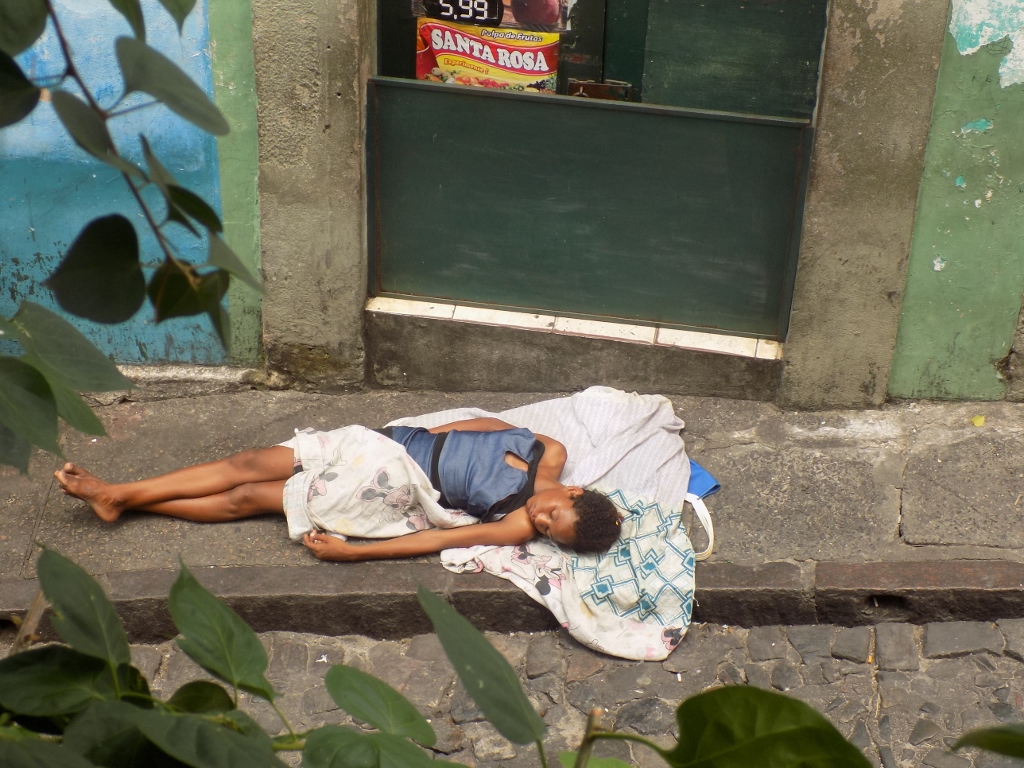 This is part of Salvador, too
This is part of Salvador, too
After Sneža woke up as well, we first waited to have our breakfast (our accommodation was practically a small flat to rent and there was no proper dining room for visitors, but rather the breakfast was brought to our room), and then we went out. The neighbour from across the street, who had worked earlier on his music system making sure it functioned well and very noisily without any interruptions was by now pleased with the result of his work and with a couple of his friends was sitting in the shade of the house in which the two of us stayed. We kindly bid each other good morning and then Sneža and I started with our leisurely sightseeing of the historic centre of the city in the daylight.
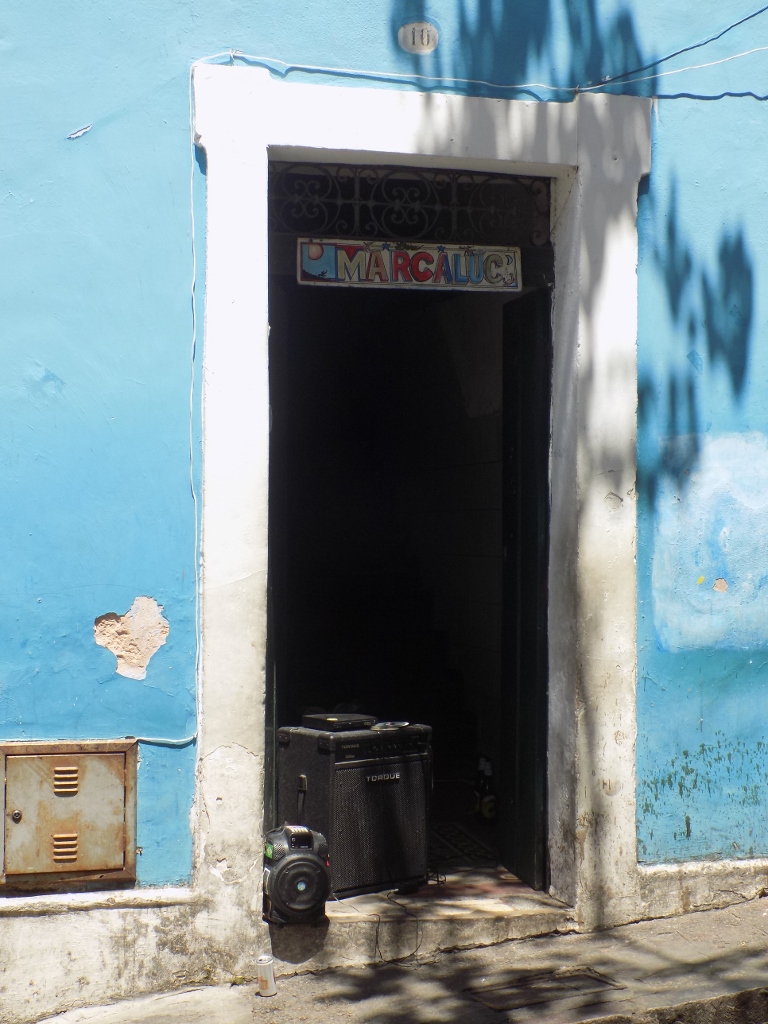 Everything is working well now
Everything is working well now
First we headed uphill towards a church that was closest to us. As I’ve mentioned in my previous text, we stayed in the part of Salvador called Carmo.
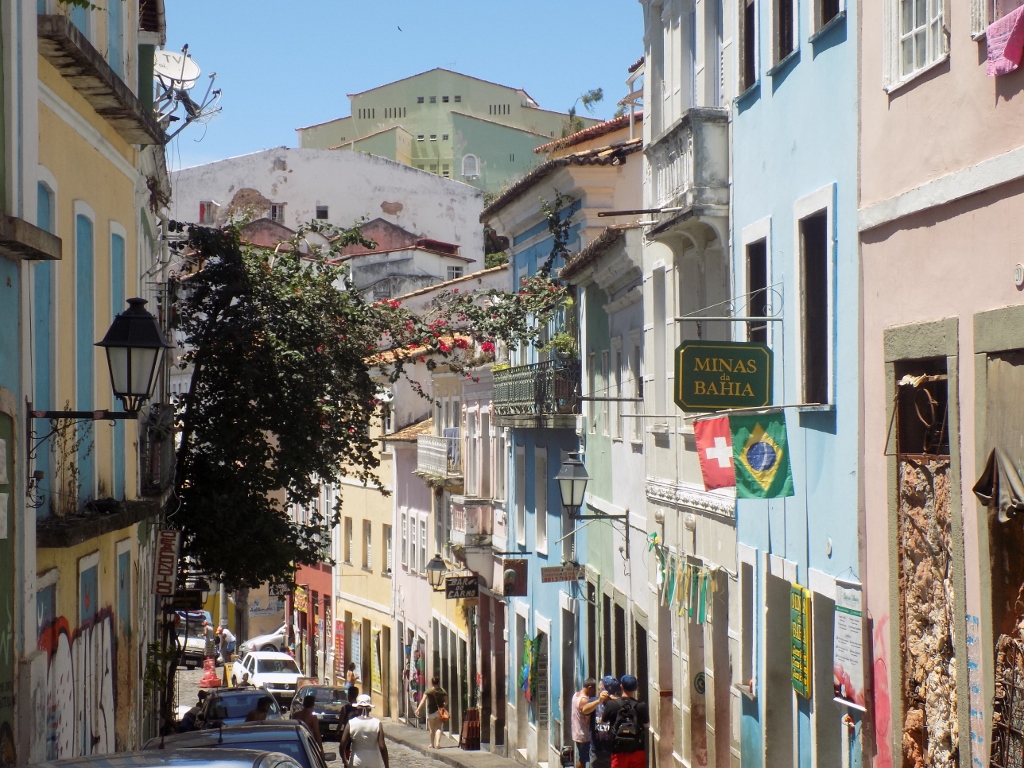 Our street in the Carmo quarter
Our street in the Carmo quarter
The main church in the neighbourhood is called the Church of the Third Order of Mount Carmel (Igreja da Ordem Terceira do Carmo) and it is located on the top of the hill that constitutes this city quarter.
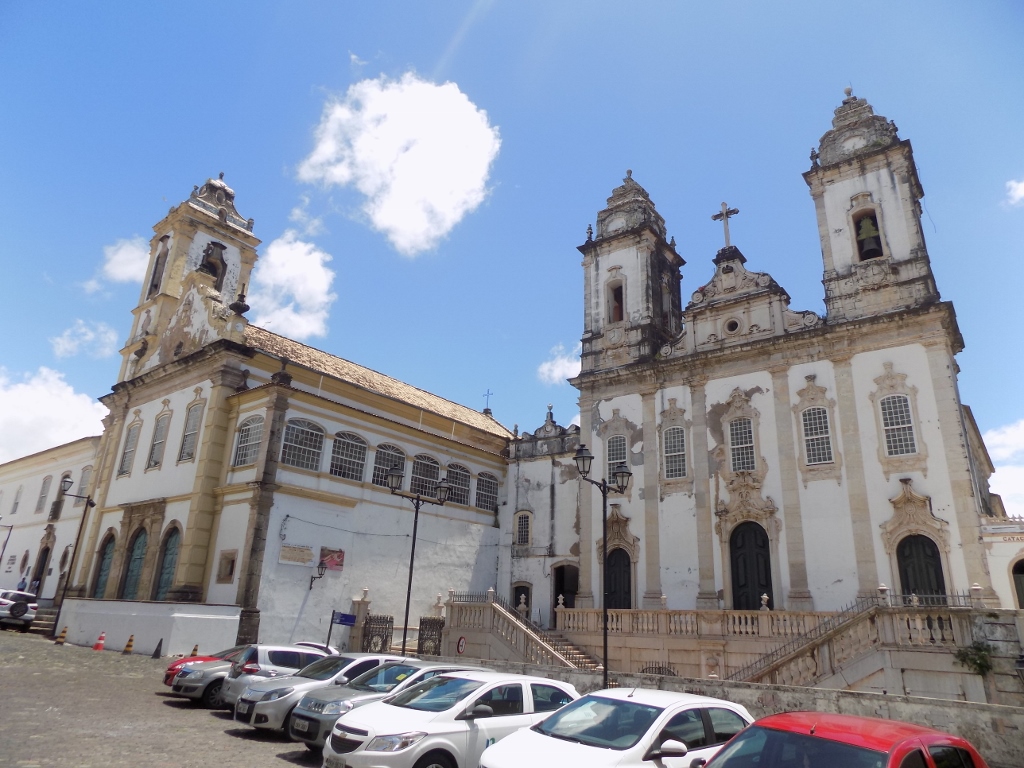 Church of the Third Order of Mount Carmel
Church of the Third Order of Mount Carmel
We entered the church the construction of which started in 1644 and then we strolled around quite a lot, since it is possible to visit interior courtyards, the sacristy and some other premises.
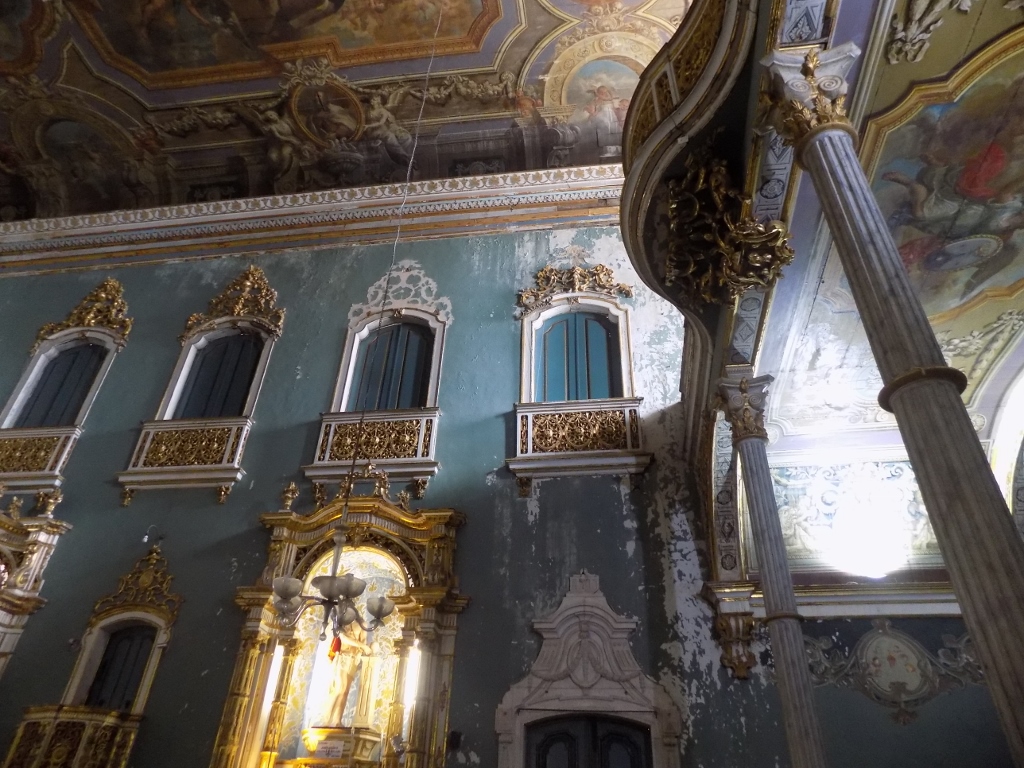 Church of the Third Order of Mount Carmel, the interior
Church of the Third Order of Mount Carmel, the interior
From there, through a window, we could take a glimpse at the neighbouring hill on which there are the central squares – Pelourinho.
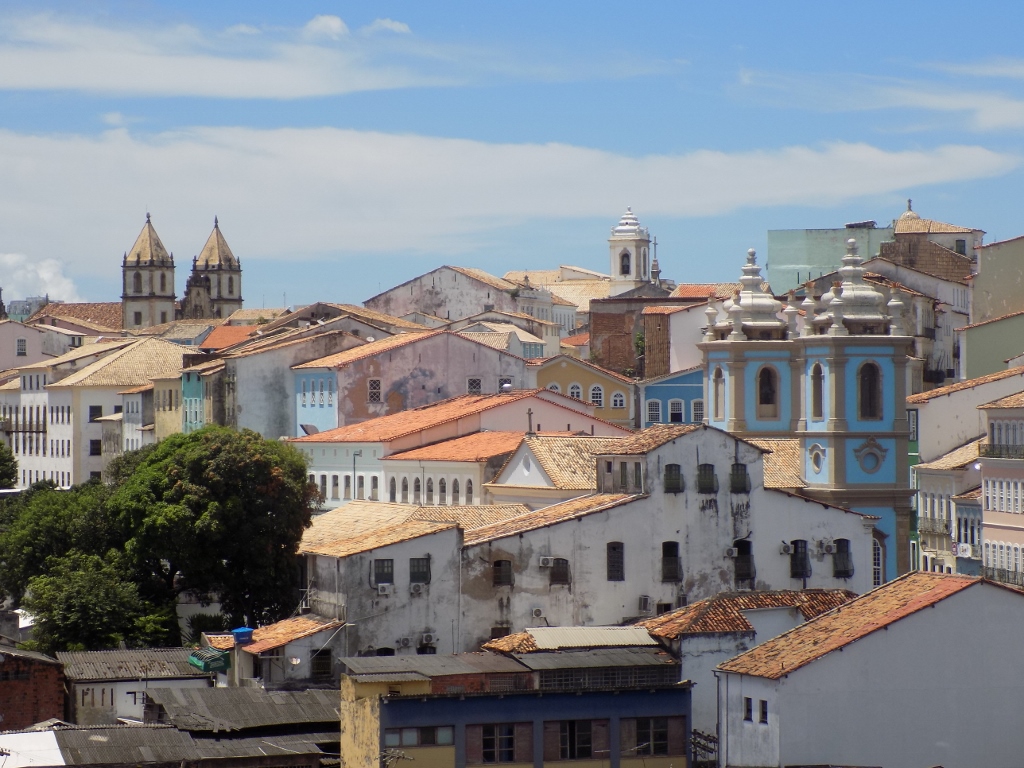 View at Pelourinho
View at Pelourinho
Then we passed by the Church of the Blessed Sacrament at Rua do Passo (Igreja do Santíssimo Sacramento da Rua do Passo) that has very interesting roofs of the bell-towers covered by the azulejo tiles. When we went downhill we reached the square called Largo do Pelurinho where we had also walked the night before.
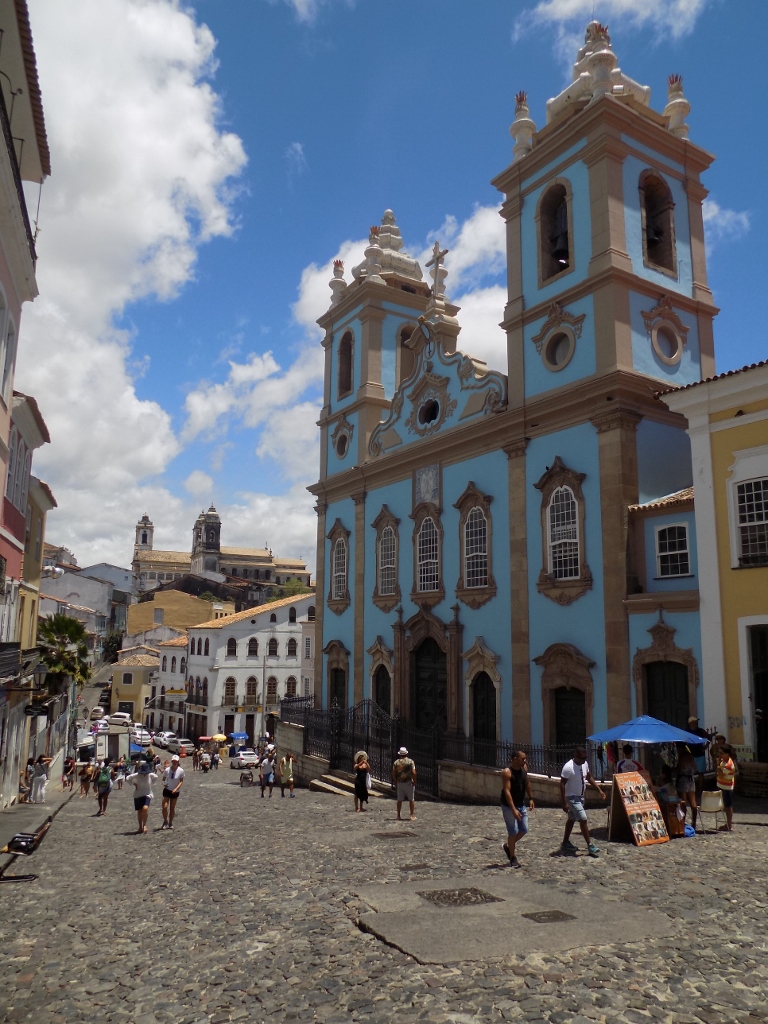 Largo do Pelurinho: Church of Our Lady of the Rosary of the Black People (Igreja Nossa Senhora do Rosário dos Pretos) is to the right, while the Church of the Third Order of Mount Carmel can be seen in the distance more to the left
Largo do Pelurinho: Church of Our Lady of the Rosary of the Black People (Igreja Nossa Senhora do Rosário dos Pretos) is to the right, while the Church of the Third Order of Mount Carmel can be seen in the distance more to the left
As a part of some trivia information, it is often mentioned that this beautiful and picturesque square features in the video by Michael Jackson for the song “They don’t care about us,” together with scenes filmed in favela Santa Marta in Rio de Janeiro. I have already mentioned this in my first text from this visit to Brazil (https://www.svudapodji.com/en/brazil-1/).
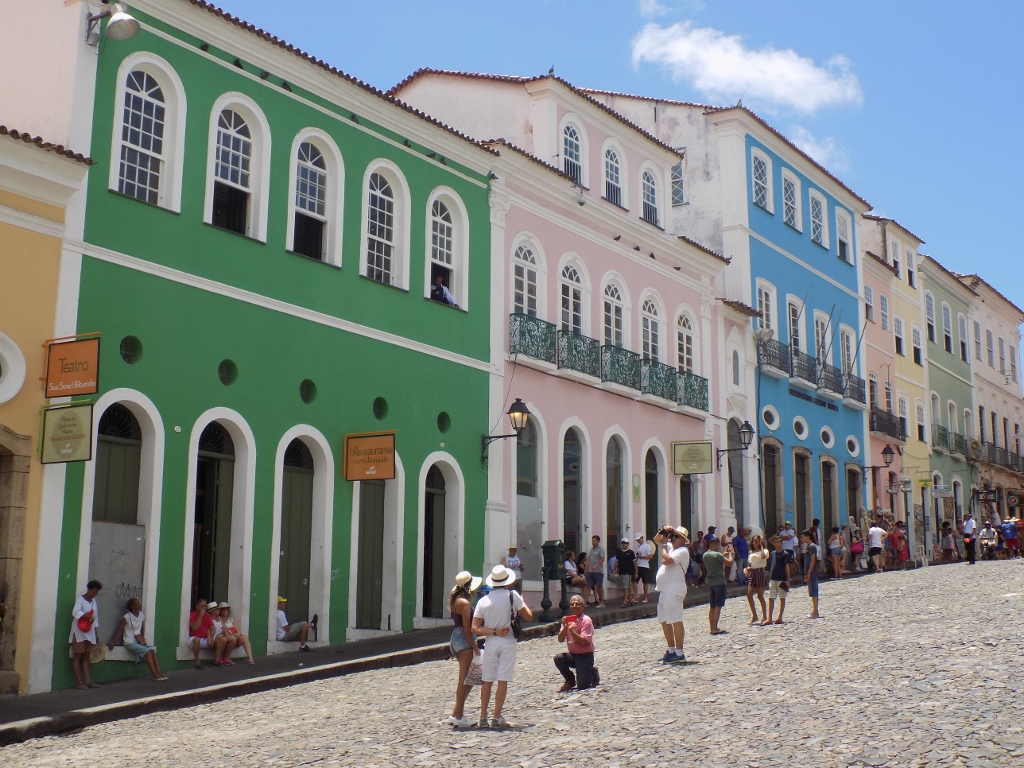 Largo do Pelurinho
Largo do Pelurinho
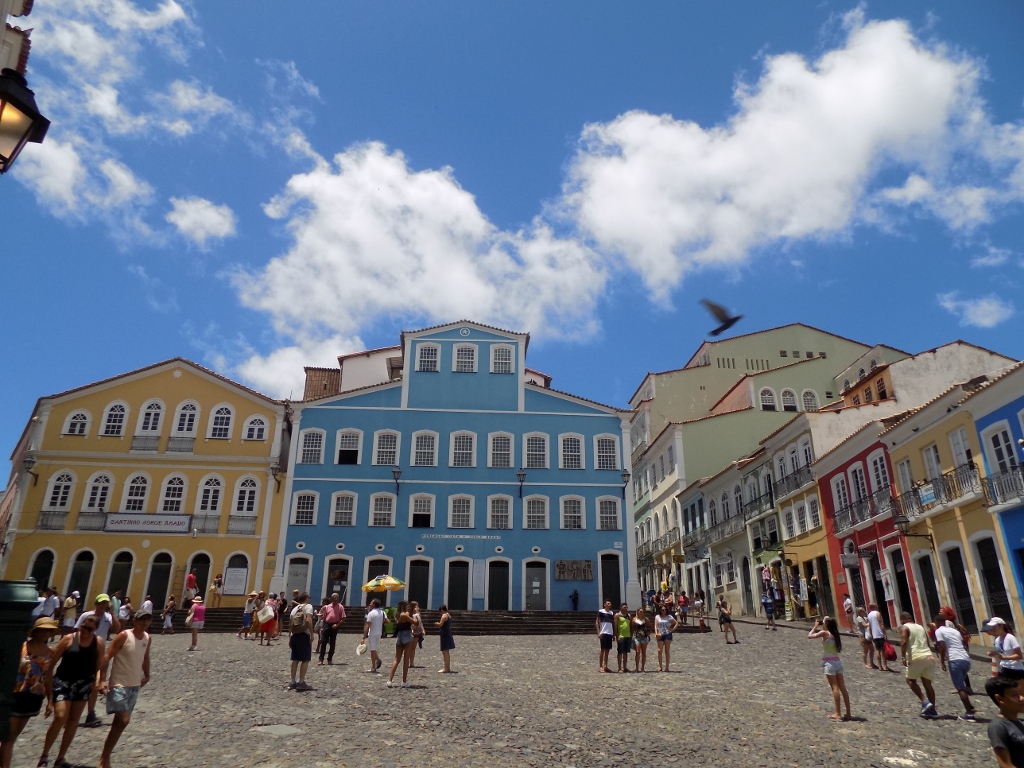 Largo do Pelurinho
Largo do Pelurinho
From here there is also a very pretty view at hill Carmo.
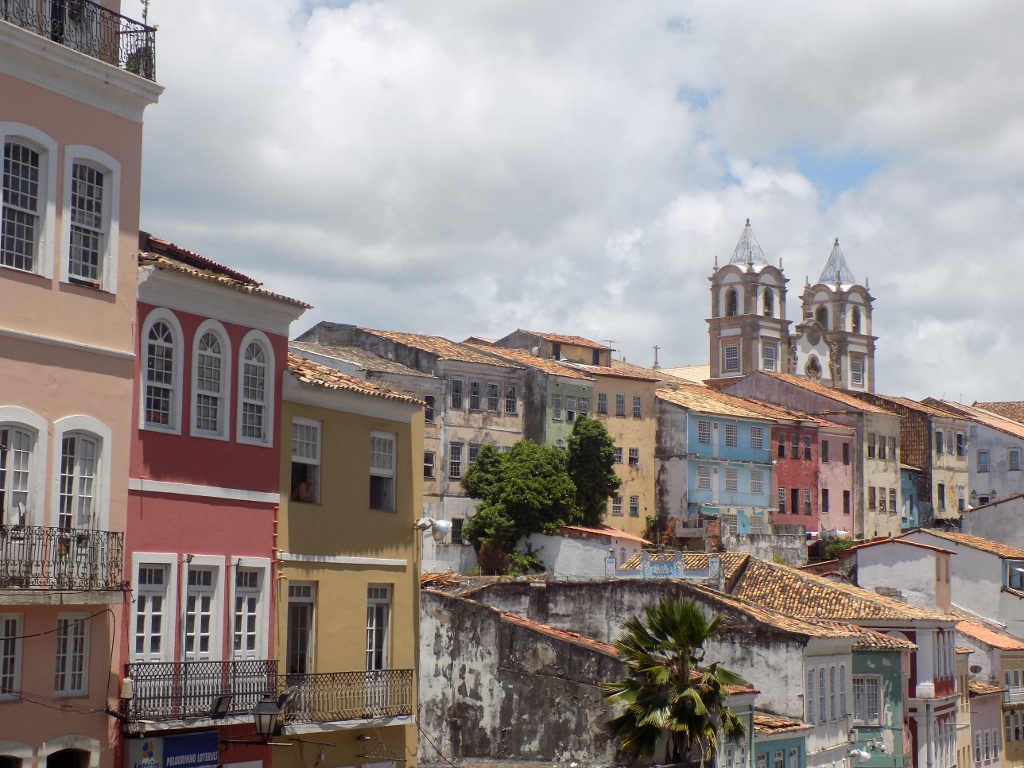 Church of the Blessed Sacrament at Rua do Passo in the distance
Church of the Blessed Sacrament at Rua do Passo in the distance
While we continued further towards the central squares, we passed by a shop and there we came across a young woman inviting passers-by to enter the shop, while also posing in traditional dress that entails incredibly wide skirts.
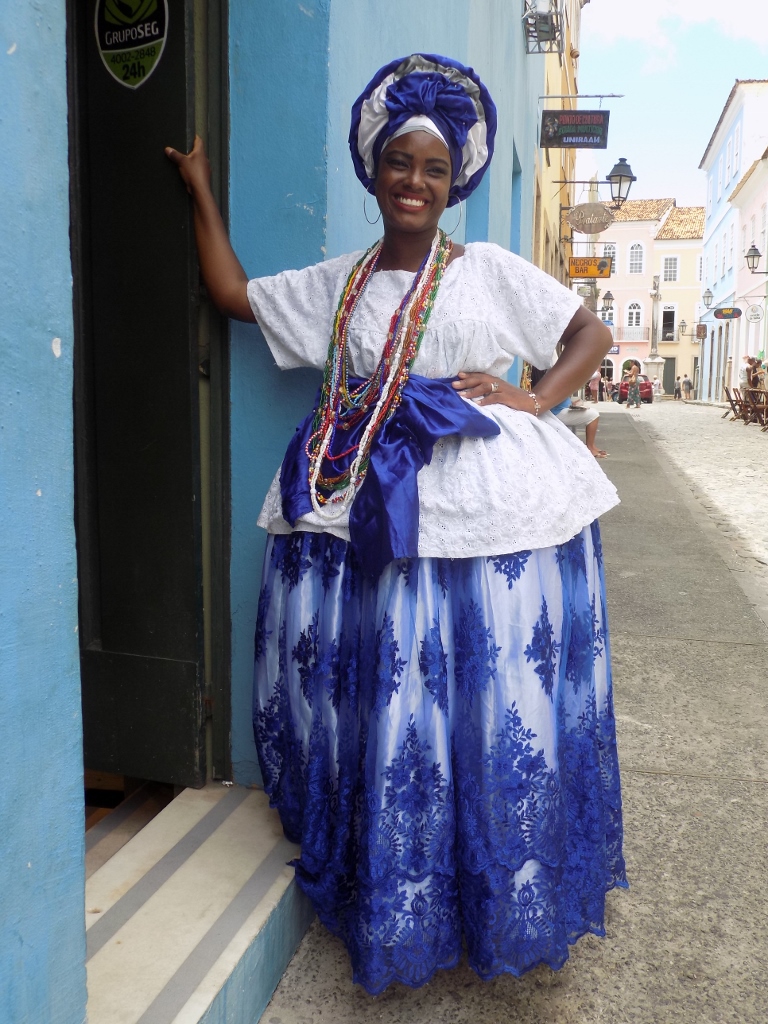 A beautiful Salvador woman
A beautiful Salvador woman
Then we reached the Church and Convent of St Francis (Igreja e Convento de São Francisco). The construction of the church started in 1708 and was finished in 1723. From the outside it may more or less appear like some other churches that can be seen in the city, but this one is particularly famous for its opulent interior decoration. This decoration actually includes two segments. The courtyard of the monastery, as well as some passages, are richly decorated with azulejo tiles, while the interior of the church is completely covered with gold-plated wood carving works.
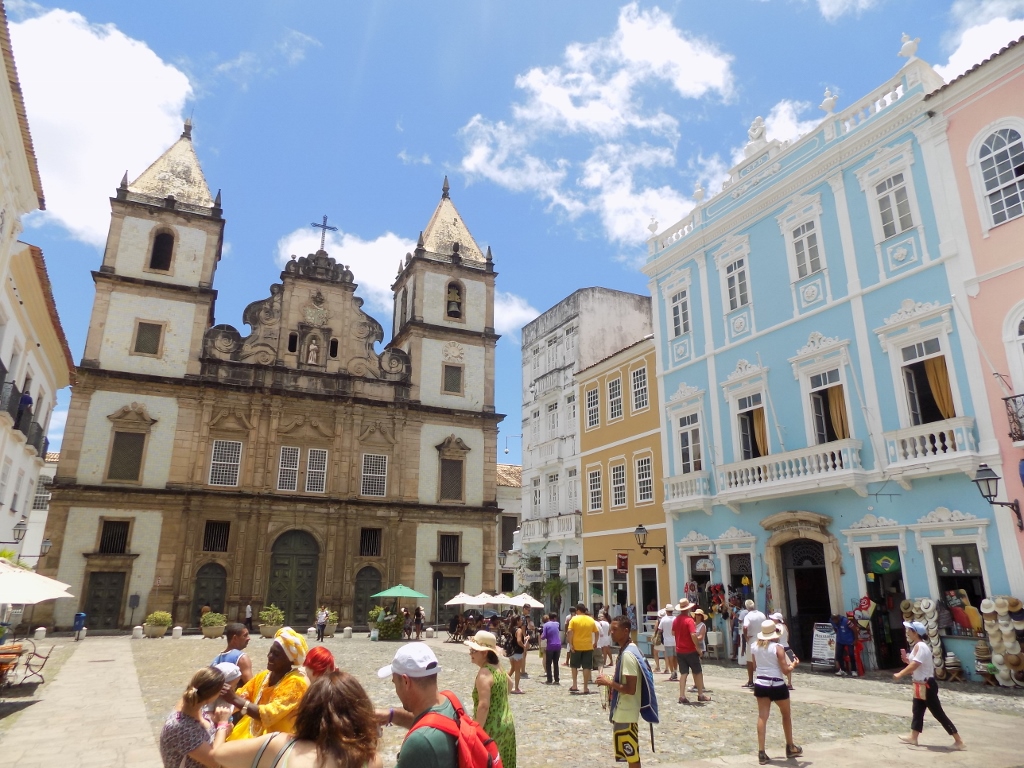 Church of St. Francis (Igreja de São Francisco)
Church of St. Francis (Igreja de São Francisco)
We visited the courtyard or rather the cloister first and were absolutely delighted. Hand-painted azulejo tiles decorate all the walls.
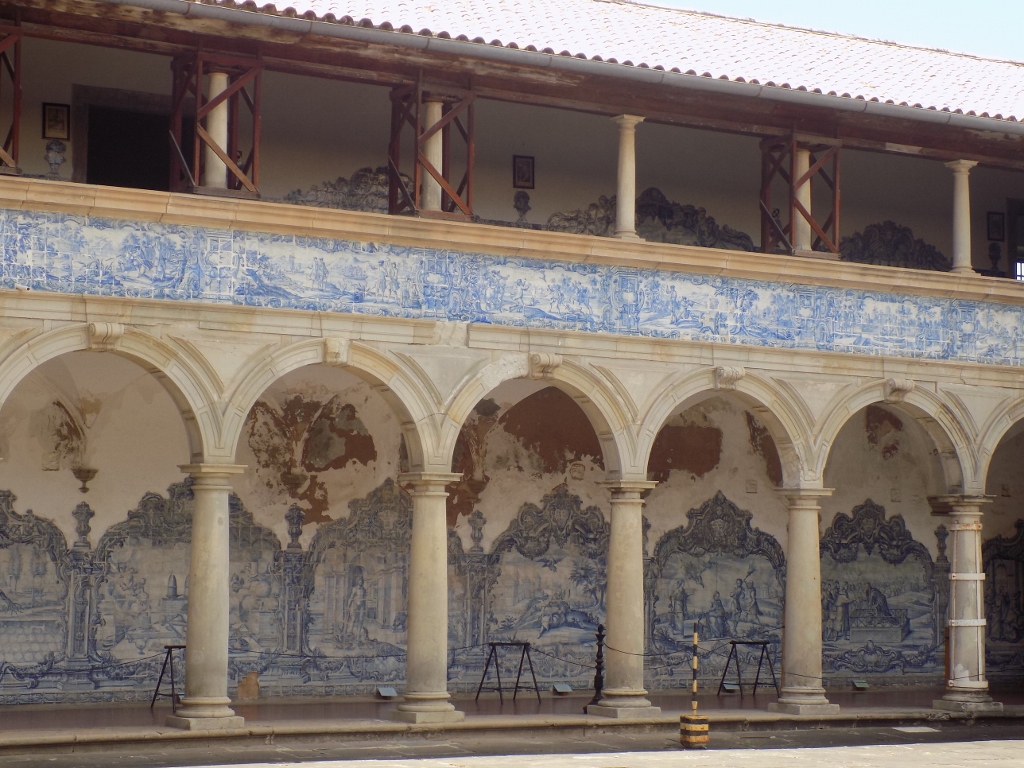 Convent of St. Francis, cloister
Convent of St. Francis, cloister
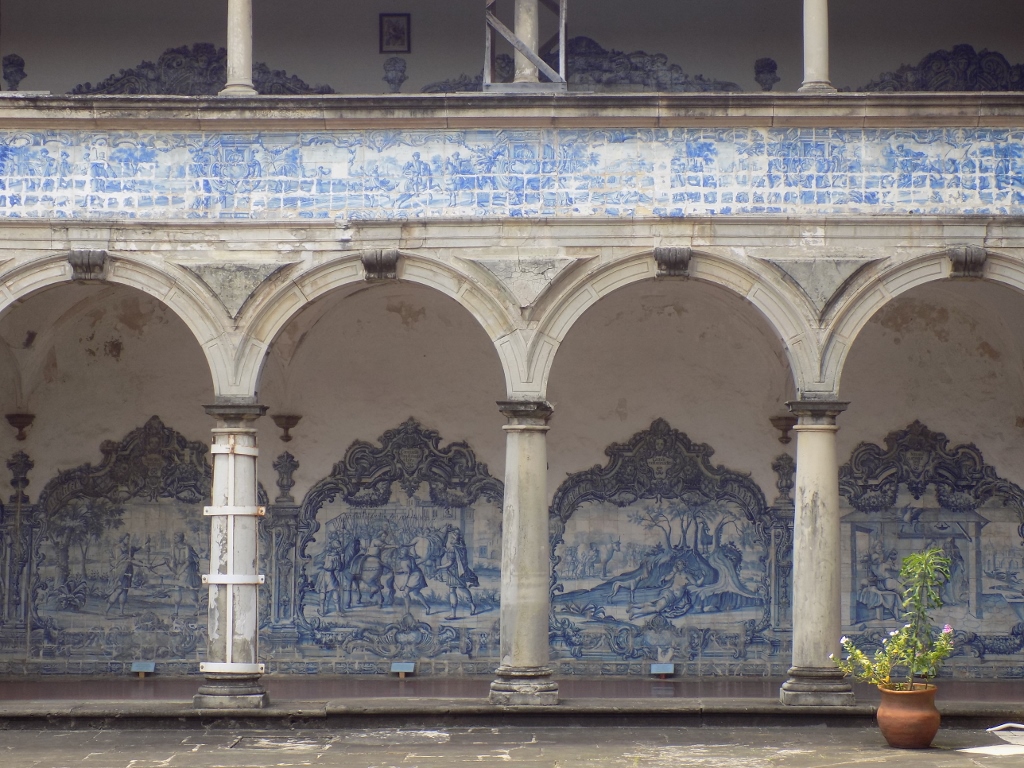 Convent of St. Francis, cloister
Convent of St. Francis, cloister
On the ground floor, there are 37 scenes depicted in these tiles. They were inspired by the paintings of a Flemish artist, Otto van Veen (1556-1629), who at the beginning of the 17th century worked on the so-called emblem books. The emblem books are collections that show “emblems” (meaning allegorical illustrations) with accompanying texts that provide an explanation, usually in the form of a moral message or a poem.
As far as the compositions shown in the cloister of the Convent of St. Francis are concerned, the epigraphs on them were inspired by Horace’s texts. Thus, for instance, on the following photo on the top in the middle it is possible to see a part of a Latin moral Quis dives qui nil cupit pauper avarus, loosely meaning “He who does not desire anything is rich, the miser is poor.”
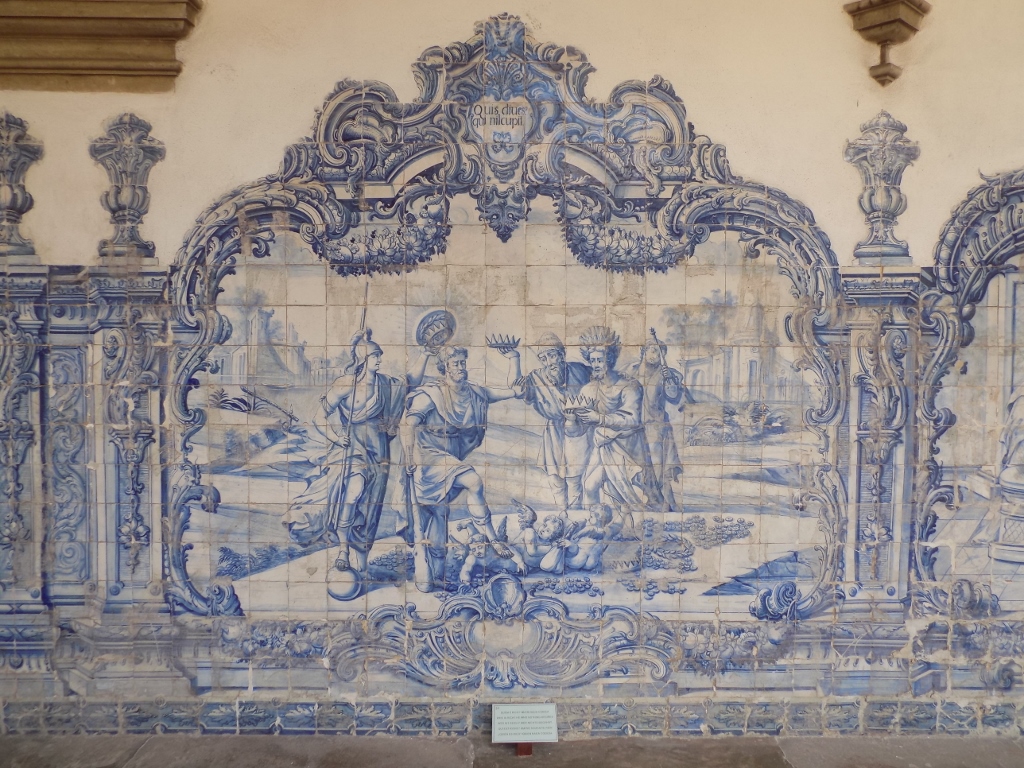 Convent of St. Francis, cloister
Convent of St. Francis, cloister
The depictions on the tiles on the upper floor show scenes of country life, hunting, fishing, symbols of the five senses, the months and the continents, but we could not go there. Still, tiles with different scenes may also be seen in corridors, like the one in the photo below that leads to the sacristy, as well as to the church.
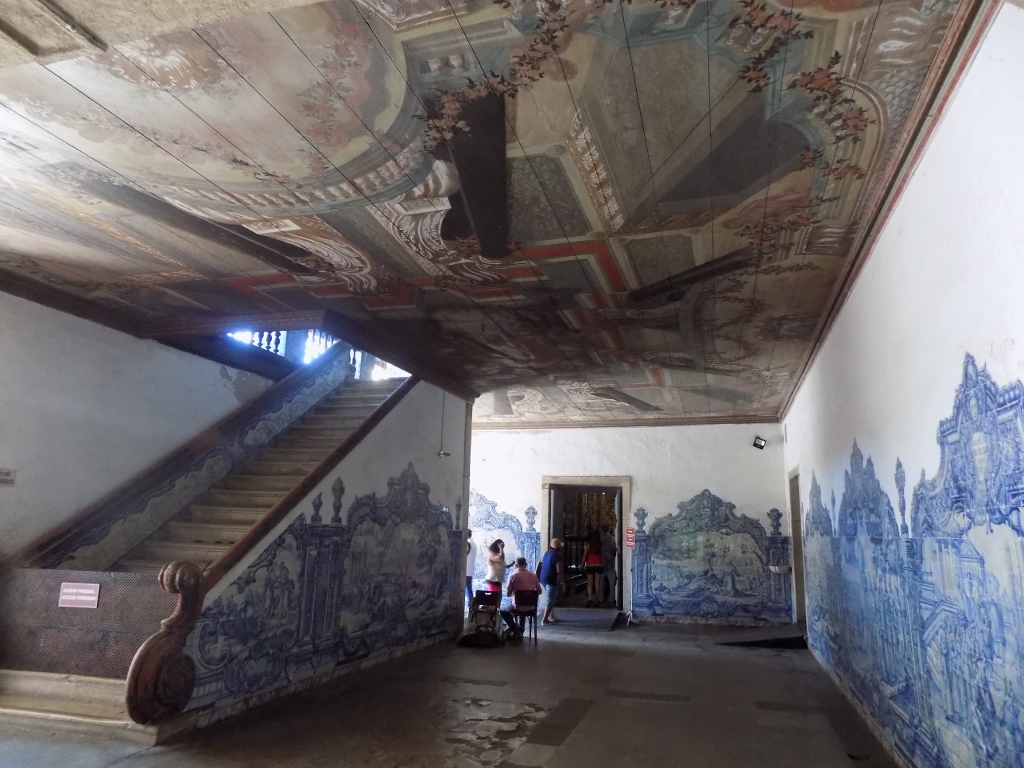 Convent of St. Francis, a section that joins the cloister, the upper floor, the sacristy and the church
Convent of St. Francis, a section that joins the cloister, the upper floor, the sacristy and the church
Then we entered the church and what can I tell you – it is the most opulent church in Brazil. All of its surfaces are completely covered in gold-plated wood-carvings.
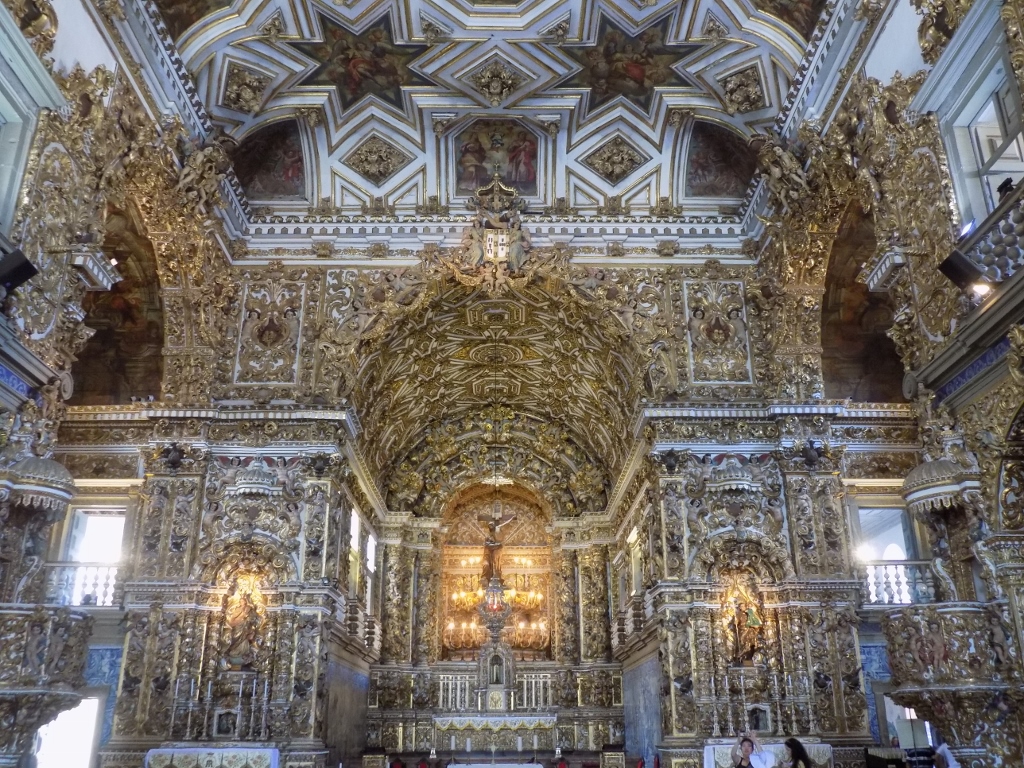 Church of St. Francis
Church of St. Francis
Personally, I’m not particularly impressed by such flaunting of riches. I remember when I was in the United Arab Emirates and then afterwards people asked me if I had visited the recently opened luxury hotel Burj Al Arab, since there were apparently organised tours and the popular stories said the hotel had, for instance, faucets made of gold, etc. I said I hadn’t since I was not interested in that. It only meant that the investors had a lot of money. No more or less.
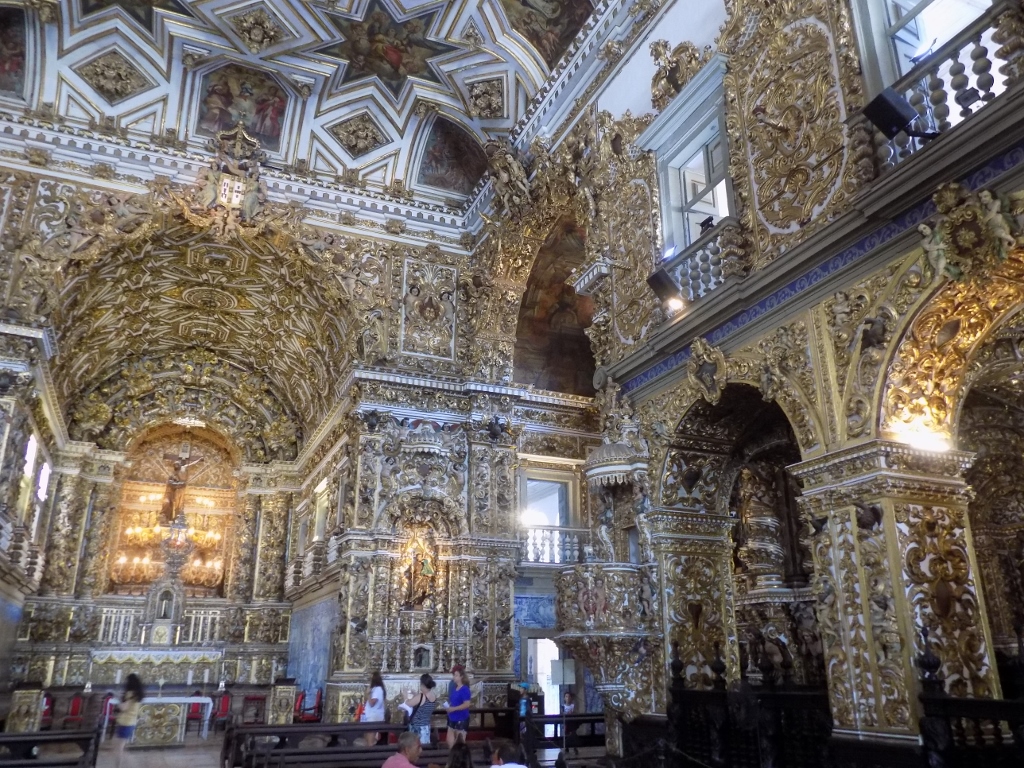 Church of St. Francis
Church of St. Francis
So, I hold more or less the same position as regards the Church of St. Francis in Salvador, with a side note that I can’t help but think about the incredibly huge divide between the appearance of the church and the saint it was dedicated to. St Francis of Assisi himself is the epitome of modesty, absolutely contrary to the interior of the church that glorifies him. But then again, it seems to me that throughout the history the Catholic Church has often been ready to act in the manner contrary to the words of Christ it preaches.
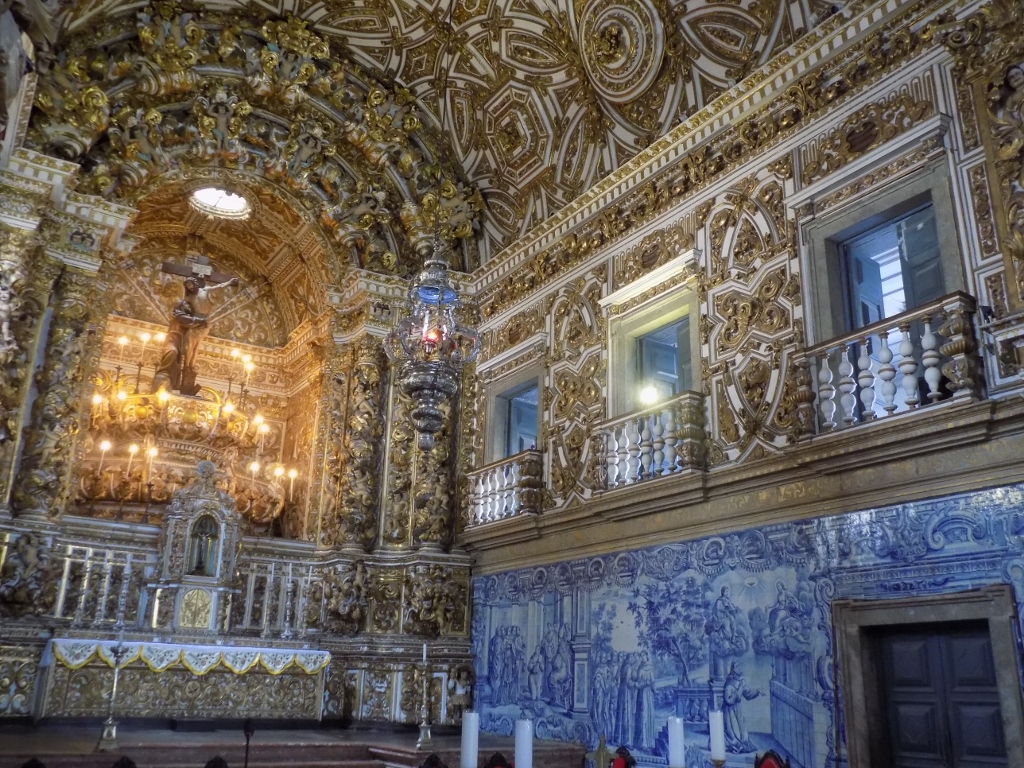 Church of St. Francis
Church of St. Francis
The images depicted within the church by azulejo tiles show precisely the scenes from the life of St Francis of Assisi, which, of course, is not congruent with this huge quantity of gold taking into consideration that this saint unequivocally celebrated poverty.
Still, all that glitters is not gold. There is also silver. Like, for instance, a chandelier that weighs 80 kg.
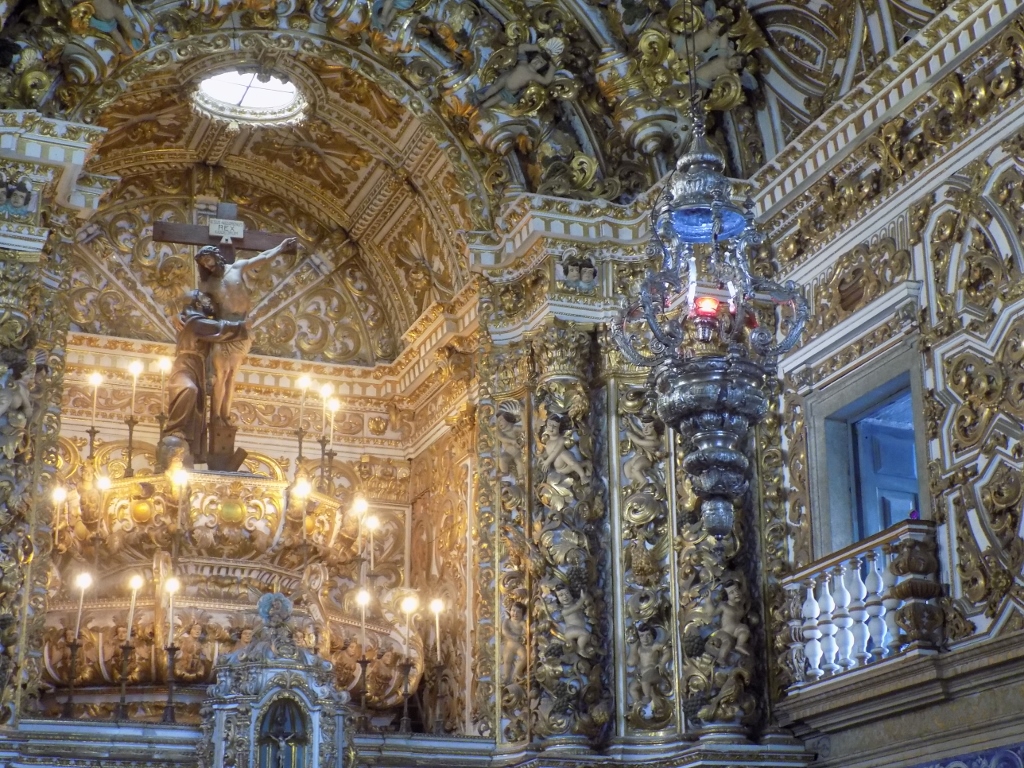 Church of St. Francis, the chandelier is on the right-hand side
Church of St. Francis, the chandelier is on the right-hand side
And there are, of course, numerous details, all in line with the Baroque style in which the church was built.
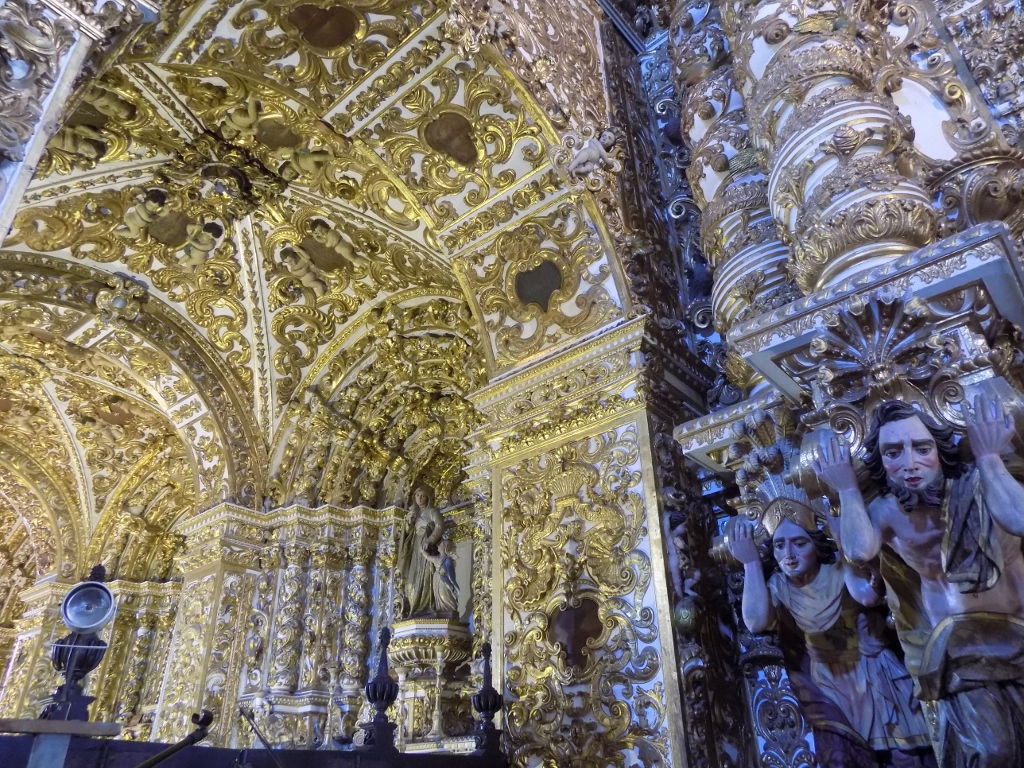 Church of St. Francis, details
Church of St. Francis, details
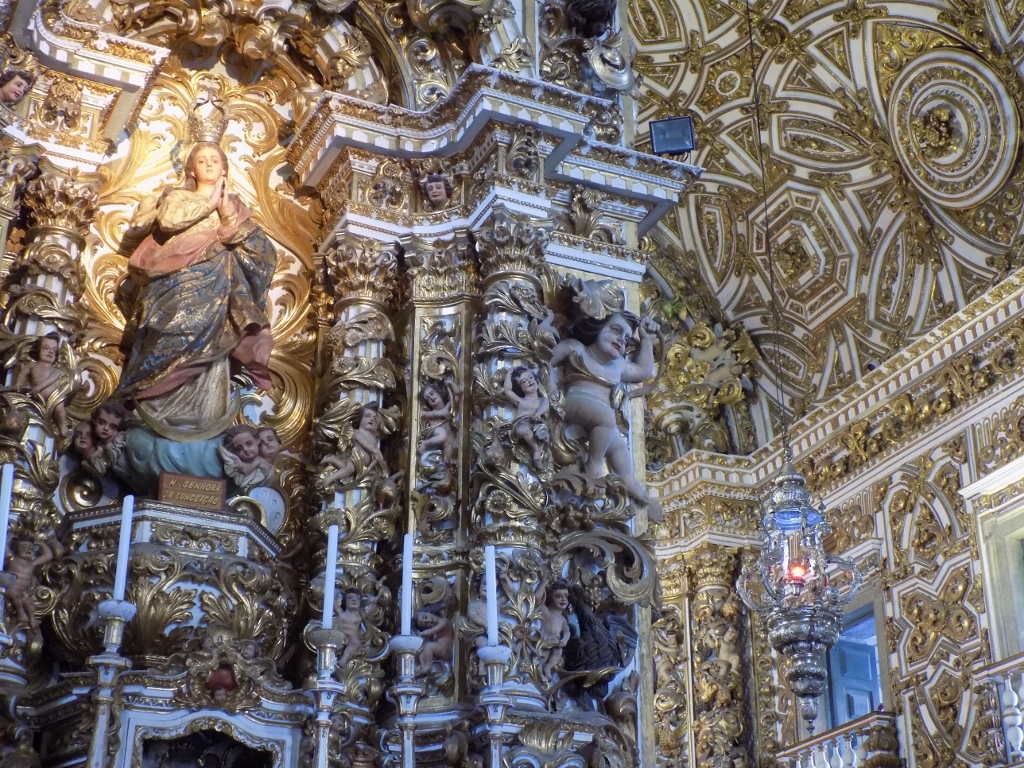 Church of St. Francis, details
Church of St. Francis, details
Then we went to the square in front of the church again and crossing it we headed for the adjacent square where the Cathedral is.
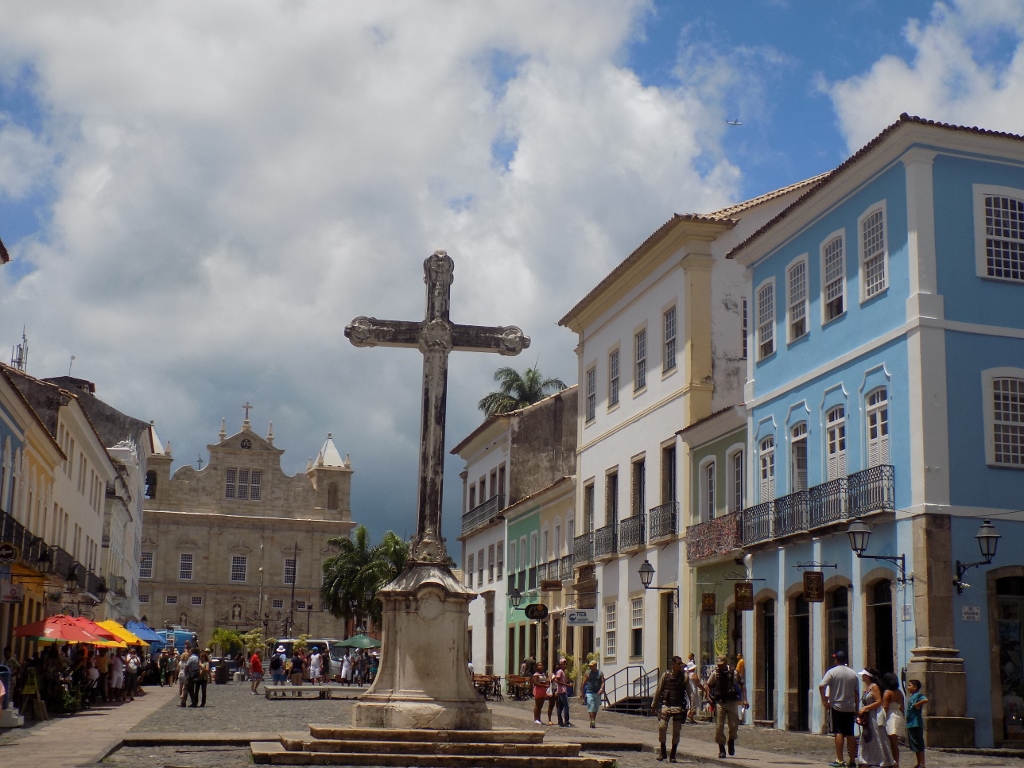 Cross of St. Francis in the square of the same name, farther to the left is the Cathedral
Cross of St. Francis in the square of the same name, farther to the left is the Cathedral
The Cathedral is located in the square called Largo Terreiro de Jesus the central part of which was fenced off at the time we visited it, since it was being renovated.
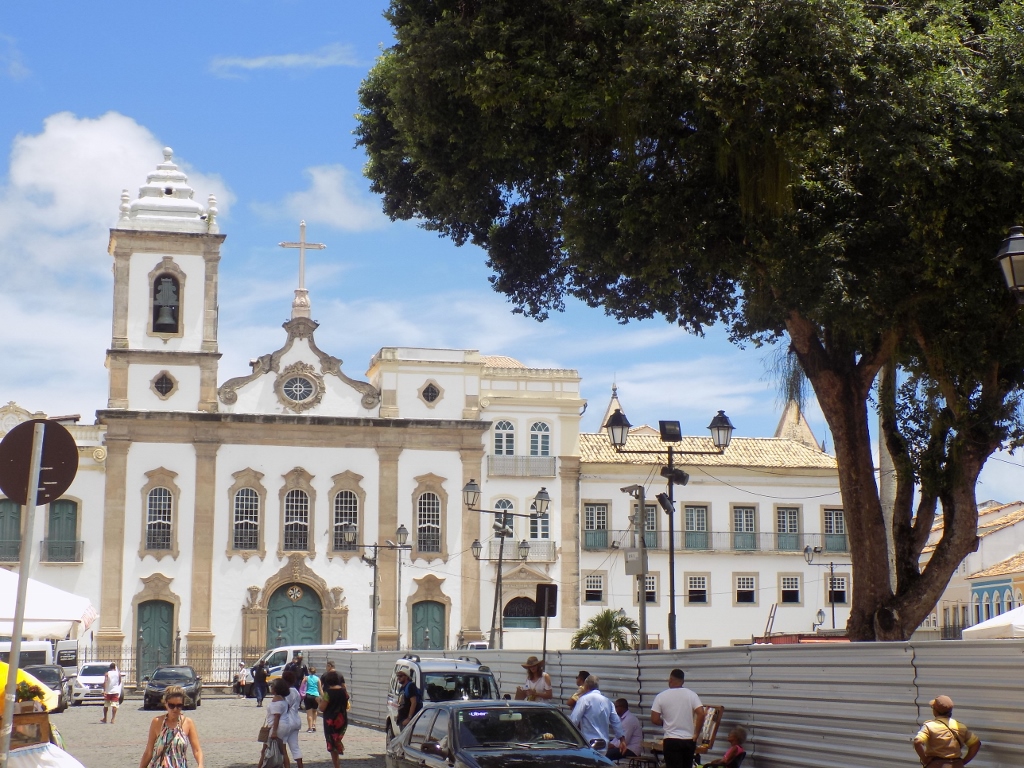 Church of St Dominic (Igreja de São Domingos Gusmão) in Largo Terreiro de Jesus
Church of St Dominic (Igreja de São Domingos Gusmão) in Largo Terreiro de Jesus
In the square there is also the Archaeological and Ethnological Museum which we wanted to visit, but we could not since it was not open. Still, the Cathedral was open and we went there instead. The Cathedral was built between 1657 and 1672, and it also has a lot of gold-plated elements, but the dominant material is sandstone that was used both for the interior walls and for the complete facade of the church.
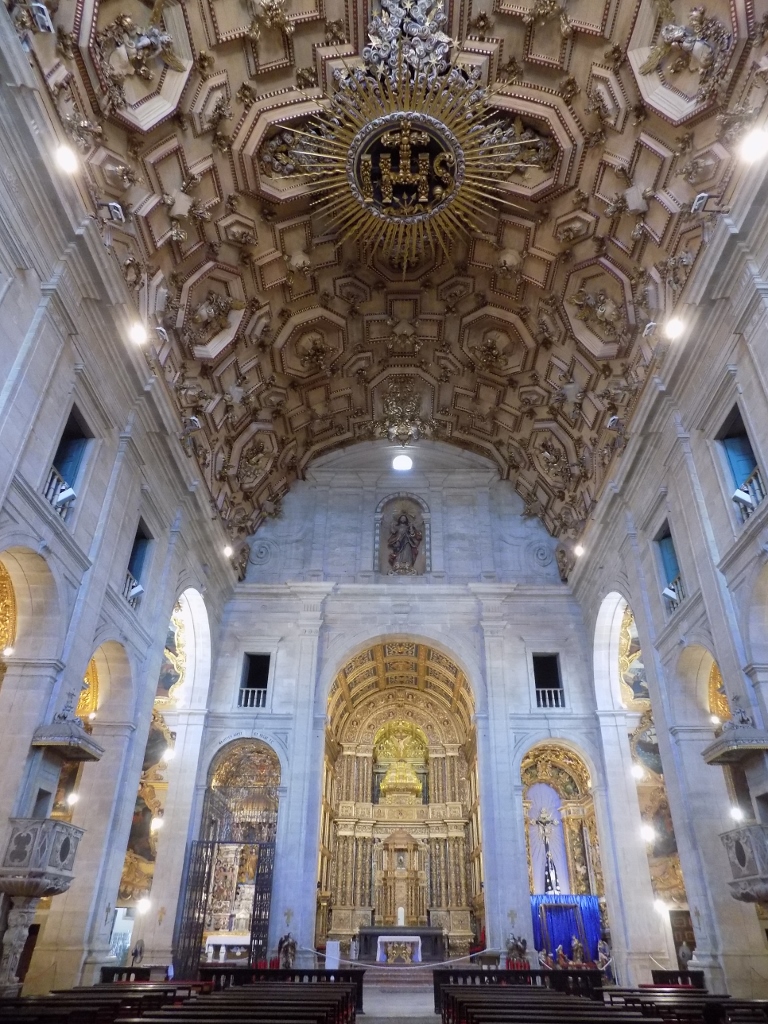 Cathedral, the interior
Cathedral, the interior
Salvador was the first capital of Brazil from 1549 until 1763 and it was here that the first slave market in the New World started to function in 1558. Because of this, to this very day there is an emphasised mixture of the European, African and American-Indian cultures. But, it is because of the numerous preserved buildings in it that the entire historic centre of Salvador is on the UNESCO’s World Heritage List. We visited some of those buildings and passed by many others, and that was all so exceptionally outstanding that Salvador made one of the strongest impressions on me during this travel around Brazil.